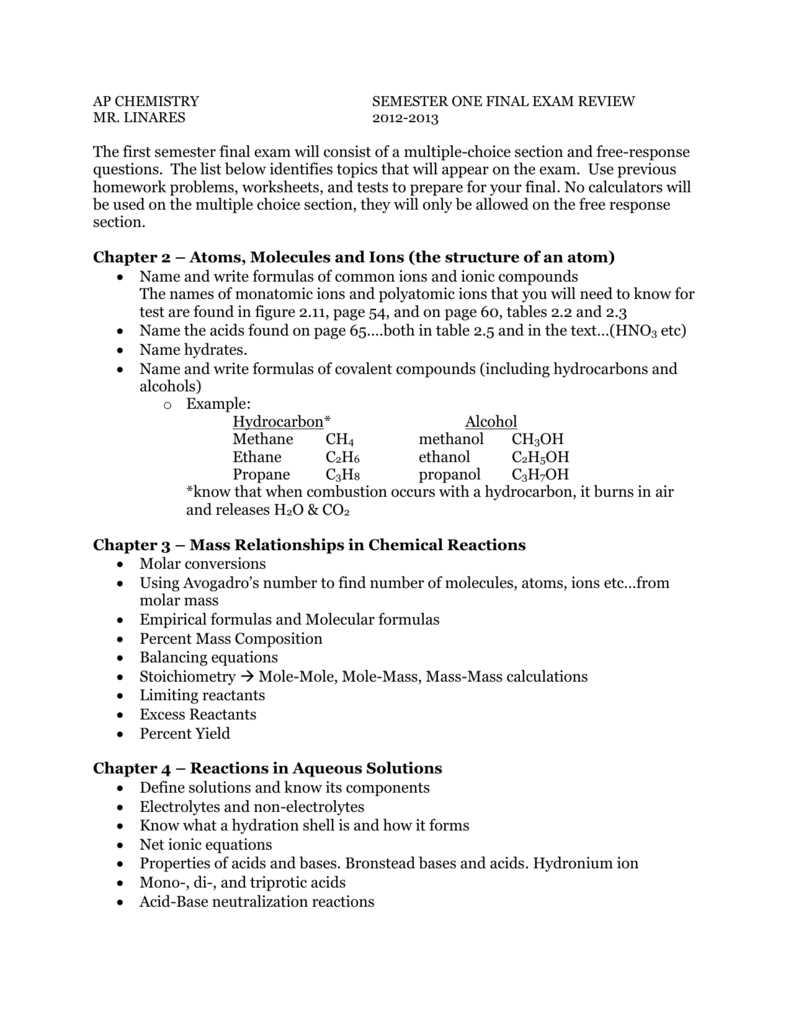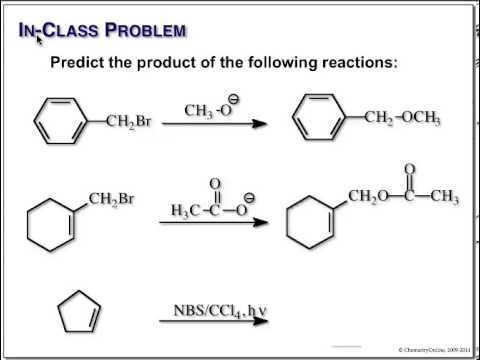
As the end of the term approaches, it is crucial to solidify your understanding of the fundamental principles that govern the natural world. This section will guide you through the essential topics, offering a clear pathway to mastering key concepts that have been explored throughout the course. Focused study and a structured review will ensure you are well-prepared to apply your knowledge in practical situations.
Success lies in a comprehensive grasp of the material, from basic theories to more complex applications. Strengthening your foundation in subjects such as atomic structure, reaction mechanisms, and energy transformations will provide a competitive edge. By reviewing these core ideas, you can approach the upcoming challenge with confidence and clarity.
Chemical Reactions and Their Types
The transformation of substances through various processes is central to understanding how materials interact with one another. These interactions can lead to the formation of entirely new compounds or the breakdown of existing ones, each governed by distinct patterns. The study of these processes helps explain everything from everyday phenomena to complex industrial operations.
Reactions are classified into several categories, each reflecting the nature of the change that occurs. Some reactions involve the combination of multiple elements to form a single product, while others result in the separation of a compound into simpler substances. Additionally, there are reactions where energy in the form of heat or light is either absorbed or released.
Among the most common types are synthesis, decomposition, and displacement reactions. In synthesis, two or more substances combine to form a new one. Decomposition reactions, on the other hand, involve the breakdown of a single compound into its components. Displacement reactions occur when an element or ion in one compound is replaced by another element or ion.
Understanding these different categories provides a foundational framework for predicting the outcomes of various interactions and their potential applications in different fields of science and technology.
Understanding the Periodic Table

The periodic table serves as a systematic arrangement of elements, providing valuable insights into their properties and behaviors. This organized structure allows scientists to predict how different substances will interact based on their placement. Each element is placed in a specific position, reflecting shared characteristics with others in the same row or column.
The table is divided into several groups and periods, with each group containing elements that exhibit similar chemical properties. The organization of these elements reveals patterns that are crucial for understanding the relationships between them, helping to guide further studies and applications in various scientific fields.
| Group 1 | Group 2 | Group 3 | Group 4 | Group 5 |
|---|---|---|---|---|
| Hydrogen (H) | Helium (He) | Lithium (Li) | Beryllium (Be) | Boron (B) |
| Sodium (Na) | Magnesium (Mg) | Aluminum (Al) | Silicon (Si) | Phosphorus (P) |
| Potassium (K) | Calcium (Ca) | Scandium (Sc) | Titanium (Ti) | Vanadium (V) |
This layout simplifies the complex relationships between elements, highlighting the underlying trends that make up their unique characteristics. As we move through the table, we can see patterns of increasing atomic number and the gradual change in properties, from metals to non-metals, helping to classify and predict the behavior of unknown elements.
Understanding the Periodic Table
The periodic table serves as a systematic arrangement of elements, providing valuable insights into their properties and behaviors. This organized structure allows scientists to predict how different substances will interact based on their placement. Each element is placed in a specific position, reflecting shared characteristics with others in the same row or column.
The table is divided into several groups and periods, with each group containing elements that exhibit similar chemical properties. The organization of these elements reveals patterns that are crucial for understanding the relationships between them, helping to guide further studies and applications in various scientific fields.
| Group 1 | Group 2 | Group 3 | Group 4 | Group 5 |
|---|---|---|---|---|
| Hydrogen (H) | Helium (He) | Lithium (Li) | Beryllium (Be) | Boron (B) |
| Sodium (Na) | Magnesium (Mg) | Aluminum (Al) | Silicon (Si) | Phosphorus (P) |
| Potassium (K) | Calcium (Ca) | Scandium (Sc) | Titanium (Ti) | Vanadium (V) |
This layout simplifies the complex relationships between elements, highlighting the underlying trends that make up their unique characteristics. As we move through the table, we can see patterns of increasing atomic number and the gradual change in properties, from metals to non-metals, helping to classify and predict the behavior of unknown elements.
Acids, Bases, and pH Levels
The balance between acids and bases plays a crucial role in various chemical processes. This interaction affects the properties of substances, influencing how they react and behave in different environments. Understanding this balance is essential for grasping many aspects of science, from biological systems to industrial applications.
Understanding Acidity and Alkalinity
Substances can be categorized based on their ability to either donate or accept specific ions. Acids tend to release certain particles when dissolved, while bases do the opposite, accepting those same particles. The strength of these reactions is often measured on a scale that evaluates the concentration of ions present in a solution, helping to define how acidic or alkaline a substance is.
Measuring pH
The pH scale is a convenient tool for gauging the level of acidity or alkalinity in a substance. A pH value below 7 indicates an acidic environment, while a value above 7 suggests alkalinity. A pH of 7 represents a neutral state, where neither acidic nor alkaline properties dominate. Changes in pH can lead to significant shifts in the behavior of substances, affecting everything from chemical reactions to the health of ecosystems.
Solubility Rules and Precipitation
The process of dissolving substances and forming solid compounds from solutions is governed by specific guidelines. Understanding these principles helps predict which substances will dissolve in various solvents and which will result in solid formations. These rules play a crucial role in chemical reactions and are essential for understanding how different compounds behave in liquid environments.
When two solutions are mixed, a solid may form if certain conditions are met. This solid, known as a precipitate, is the result of a chemical reaction that occurs when insoluble compounds are produced. The formation of a precipitate can be predicted by following a set of established guidelines that outline the solubility of common ions and compounds in water.
- All salts containing alkali metal ions (e.g., sodium, potassium) are soluble in water.
- Nitrates, acetates, and chlorates are generally soluble, regardless of the other ions present.
- Chlorides, bromides, and iodides are soluble except for those involving silver, lead, and mercury.
- Compounds containing sulfate ions are soluble, but exceptions exist with barium, calcium, and lead sulfate.
- Hydroxides are mostly insoluble, with exceptions for alkali metals and a few other compounds like calcium hydroxide.
The formation of a precipitate can be used as a visual indicator of a chemical reaction. When a compound that is insoluble in a given solvent is produced, the precipitate can be filtered, analyzed, and identified. Precipitation reactions are fundamental in various applications, from laboratory synthesis to environmental monitoring.
Equilibrium and Le Chatelier’s Principle
In many processes, a system reaches a state where the concentrations of reactants and products remain constant over time. This dynamic balance, where opposing actions or reactions occur at the same rate, is fundamental to understanding the behavior of various reactions under different conditions. When external factors change, these systems may adjust to restore balance, and this adjustment follows specific patterns, which can be predicted.
Principle of Adjustment
Le Chatelier’s Principle describes how a system at equilibrium responds to changes in conditions such as temperature, pressure, or concentration. When a disturbance is introduced, the system shifts in a way that counteracts the change, striving to return to a state of equilibrium.
- Temperature: Increasing temperature generally favors the endothermic direction, while decreasing temperature shifts the balance towards the exothermic reaction.
- Pressure: Changes in pressure affect systems involving gases. An increase in pressure will shift the equilibrium towards the side with fewer moles of gas.
- Concentration: Adding more reactants or products will shift the equilibrium towards the side that opposes the increase, either by consuming reactants or producing more products.
Real-World Applications
Understanding how systems respond to changes in conditions is crucial in industries such as manufacturing, environmental science, and medicine. For example, optimizing the production of ammonia in the Haber process relies on manipulating temperature and pressure to favor the formation of ammonia. Similarly, reactions in biological systems often adjust to maintain homeostasis when faced with changes in internal or external environments.
Redox Reactions and Electrochemistry

In certain reactions, atoms or molecules undergo changes in their electron distribution, leading to the transfer of electrons between reactants. These processes are crucial for a wide range of natural and industrial phenomena. When these transfers occur, one substance loses electrons while another gains them, forming the foundation for many chemical transformations and energy conversions.
Electron Transfer and Oxidation-Reduction
Redox reactions involve the movement of electrons from one species to another. One reactant is oxidized, losing electrons, while another is reduced, gaining those electrons. This interplay is essential in processes such as respiration in living organisms and the functioning of batteries.
- Oxidation: The loss of electrons from an atom or molecule, which results in an increase in its oxidation state.
- Reduction: The gain of electrons by a substance, leading to a decrease in its oxidation state.
Electrochemical Cells and Energy Production
In an electrochemical cell, redox reactions are harnessed to generate electrical energy. These devices consist of two half-cells, each containing an electrode and an electrolyte. The movement of electrons from one half-cell to another through an external circuit produces a flow of electricity. Batteries and fuel cells are practical applications of electrochemical principles.
Galvanic cells, for example, convert chemical energy into electrical energy, while electrolytic cells use electrical energy to drive non-spontaneous reactions. Both types of cells rely on redox reactions to function and have broad applications in energy storage, corrosion prevention, and electroplating.
Laboratory Techniques and Safety Tips
Effective experimentation requires a combination of precise methods and strict adherence to safety protocols. Mastering laboratory procedures ensures accurate results, while safety guidelines minimize risks and protect individuals from potential hazards. Proper handling of equipment and materials is essential for a smooth and secure laboratory experience.
Key Laboratory Techniques
Understanding and applying fundamental techniques are vital for success in any lab. These methods involve careful measurement, observation, and manipulation of materials to achieve desired outcomes. Common techniques include:
- Filtration: A method used to separate solids from liquids or gases using a filter medium.
- Titration: A precise technique for determining the concentration of a solution by adding a reagent of known concentration.
- Distillation: A separation process that relies on differences in boiling points to purify liquids or separate mixtures.
Safety Practices and Precautions
Safety is a top priority in any laboratory. Following safety guidelines prevents accidents and ensures a safe working environment. Important safety tips include:
- Protective Gear: Always wear appropriate personal protective equipment such as gloves, goggles, and lab coats.
- Proper Ventilation: Work in well-ventilated areas, especially when handling volatile or toxic substances.
- Handling Chemicals: Always read labels and follow instructions for the proper use, storage, and disposal of chemicals.
Emergency Preparedness is crucial. Familiarize yourself with the location and proper use of safety equipment such as fire extinguishers, eyewash stations, and first aid kits. Always report accidents or spills immediately to minimize harm and maintain a safe environment.